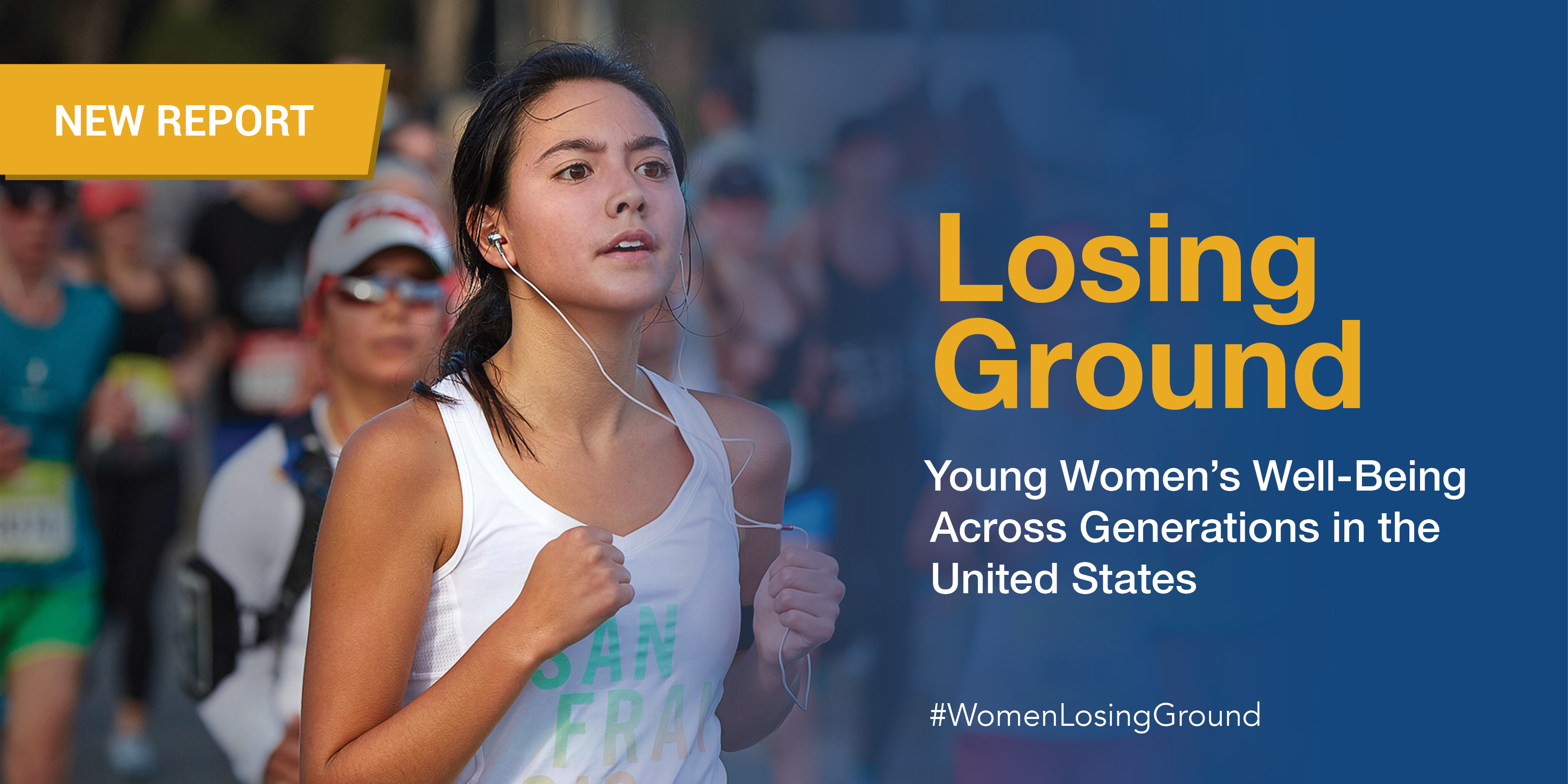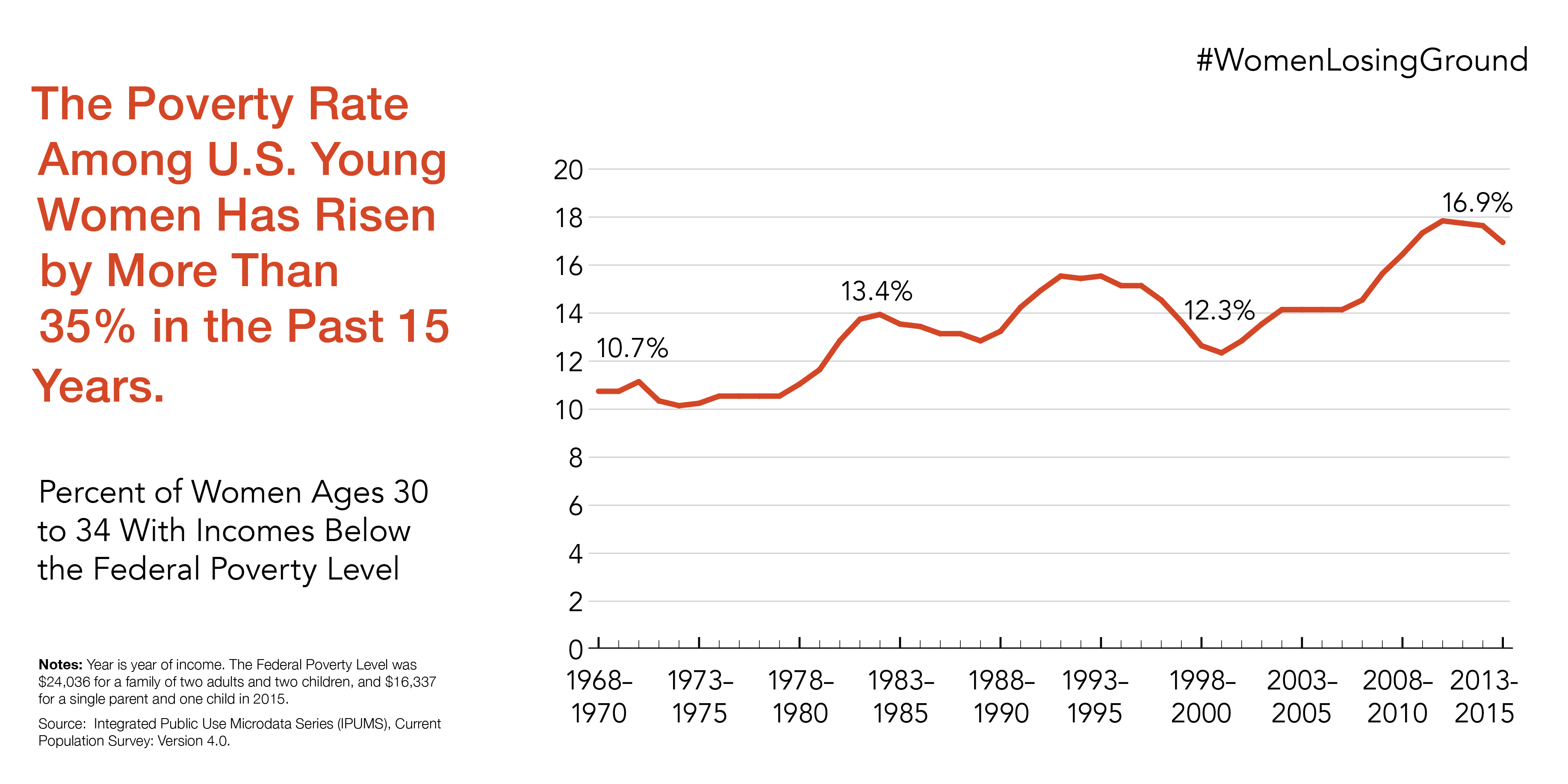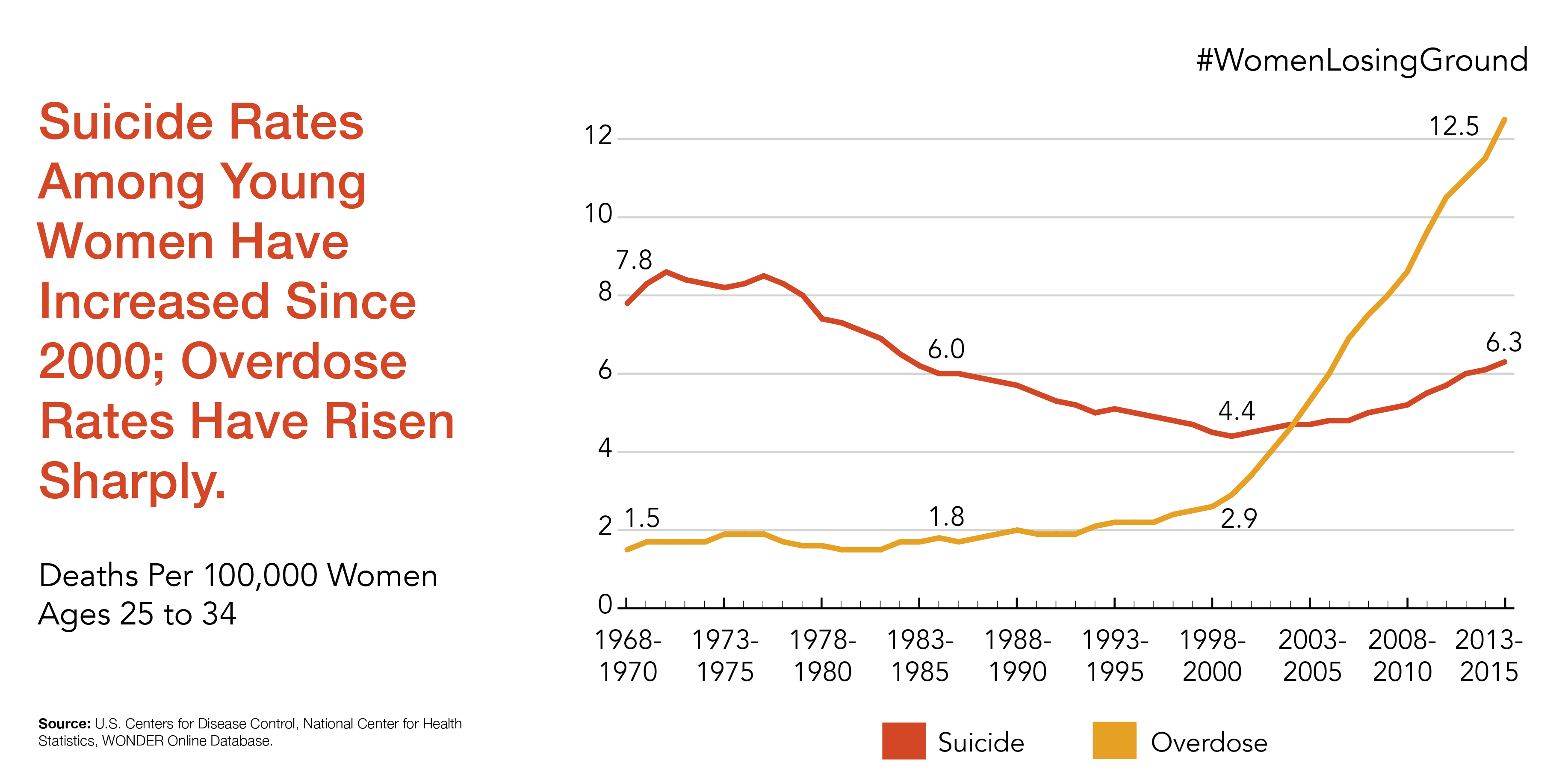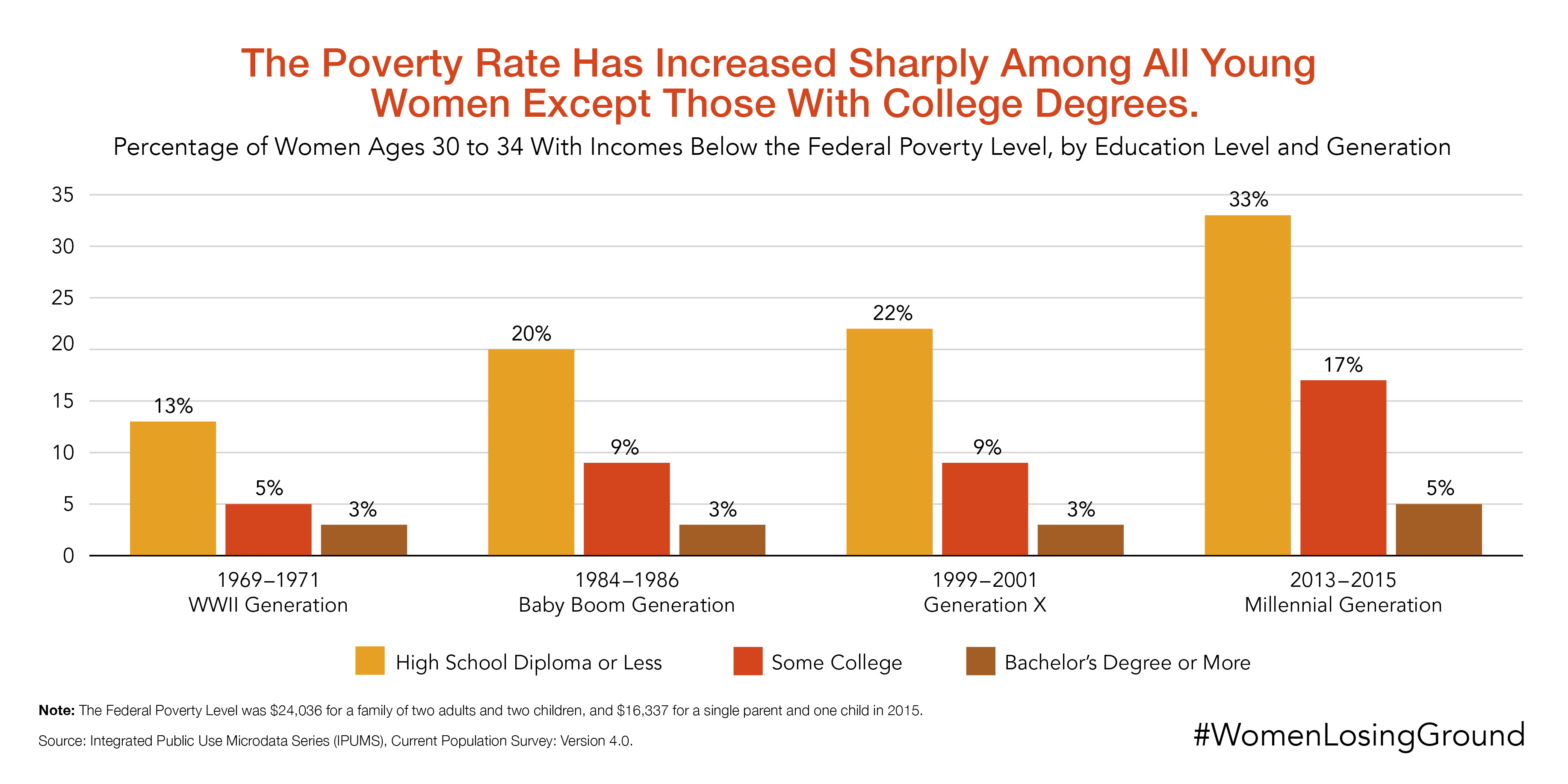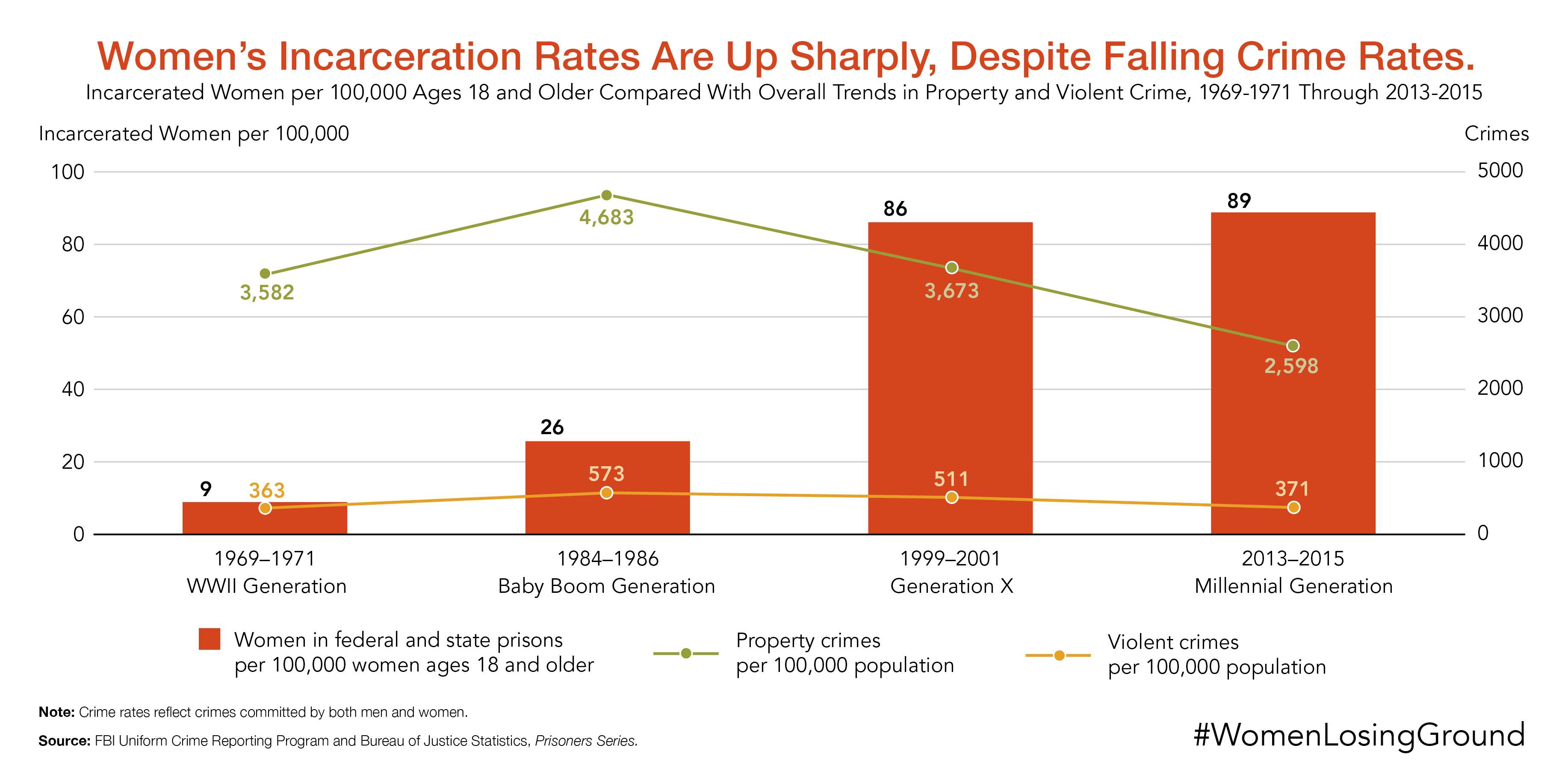Mark Mather
Associate Vice President, U.S. Programs

November 9, 2017
Associate Vice President, U.S. Programs
Senior Program Director
The level of well-being of young American women (ages 16 to 34) rose significantly for members of the Baby Boom generation but hit a wall for women in subsequent generations, the Population Reference Bureau (PRB) concludes in a new report.
In its latest Population Bulletin, “Losing Ground: Young Women’s Well-Being Across Generations in the United States,” PRB analysts present a comprehensive new Index of Young Women’s Well-Being to show how social and structural barriers to progress for young women in Generation X and the Millennial generation have contributed to women’s persistently high poverty rates, a declining share of women in high-wage/high-tech jobs, a dramatic rise in women’s incarceration rates, and increases in maternal mortality and women’s suicide.
“By looking at a collection of 14 indicators of well-being, PRB’s index provides a unique perspective on women’s path of progress during the past half-century,” said Beth Jarosz, a senior research associate at PRB and co-author of the Bulletin.
“While some measures are improving, overall the index paints a picture of lost momentum. Too many women lack the resources and supportive environments they need to live healthier lives and achieve their full potential,” Jarosz said.
Momentum has stalled or reversed on several key measures of well-being:
The PRB analysts also identified several positive trends for young women, even though these did not outweigh the negative trends in the overall index:
“The share of women with bachelor’s degrees is at an all-time high, but these educational gains have not led to similar gains in the workforce or in political leadership,” said Mark Mather, associate vice president of PRB’s U.S. Programs department and a co-author of the Bulletin.
Women still earn less than men in nearly every occupation and at every education level. In fact, women need to complete a higher level of education than men to achieve equivalent earnings.
The PRB index comprises 14 key social, economic, and health measures to compare outcomes for each generation of young women (up to age 34) with the previous generation. The results show that the progress made by those in the Baby Boom generation (born 1946 to 1964) compared with the previous World War II generation (born 1930-1945) has not continued among women of Generation X (born 1965 to 1981) and the Millennial generation (born 1982 to 2002).
PRB calculates an overall index score by comparing each generation with the preceding generation and taking into account the magnitude of improvement or decline. Young women of the Millennial generation experienced a slight decline (1 percent) in overall well-being compared with women of Generation X, and women of Generation X experienced only a modest gain (2 percent) in well-being relative to women of the Baby Boom generation. In contrast, women of the Baby Boom generation experienced a substantial gain (66 percent) in overall well-being relative to women of the World War II generation.

